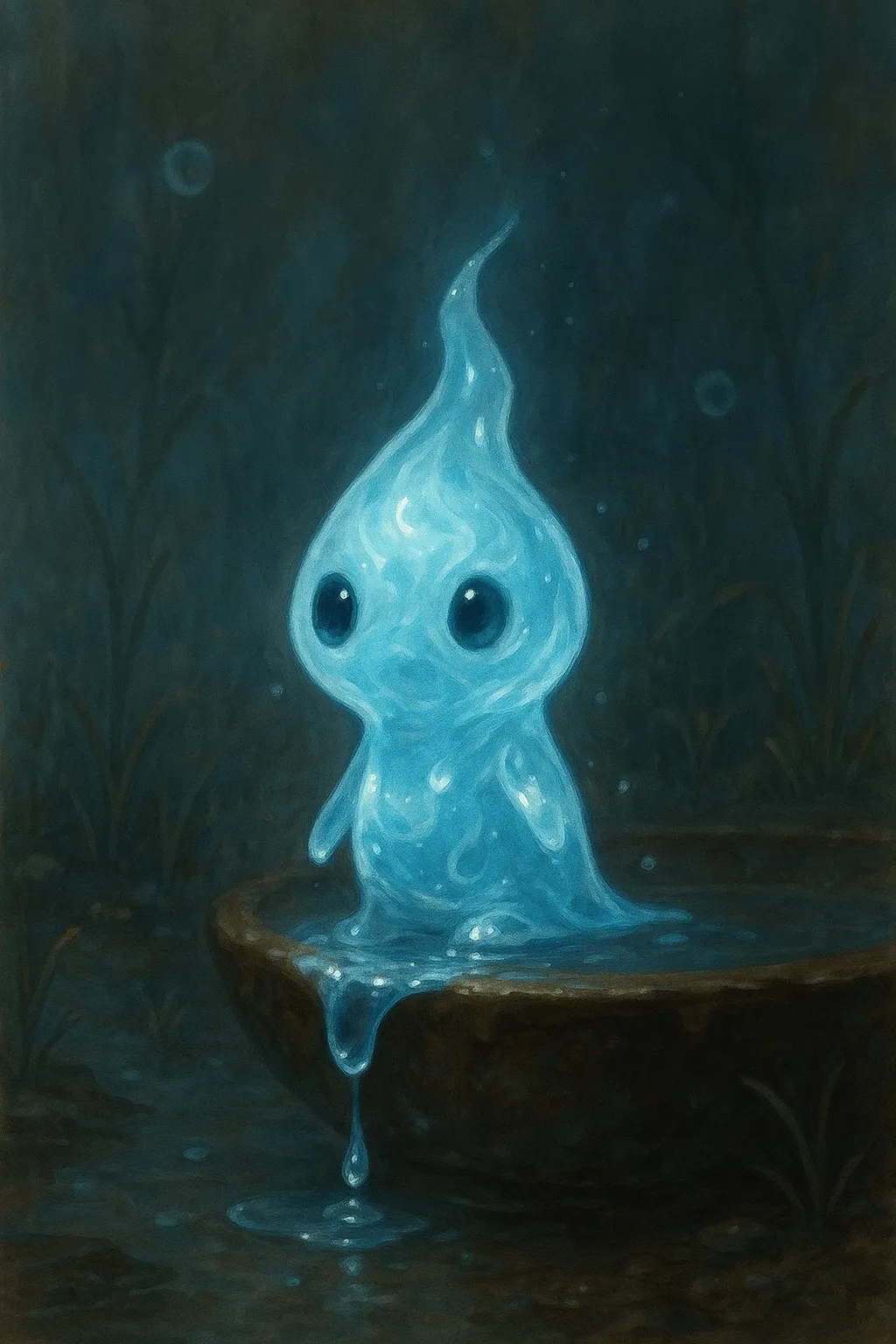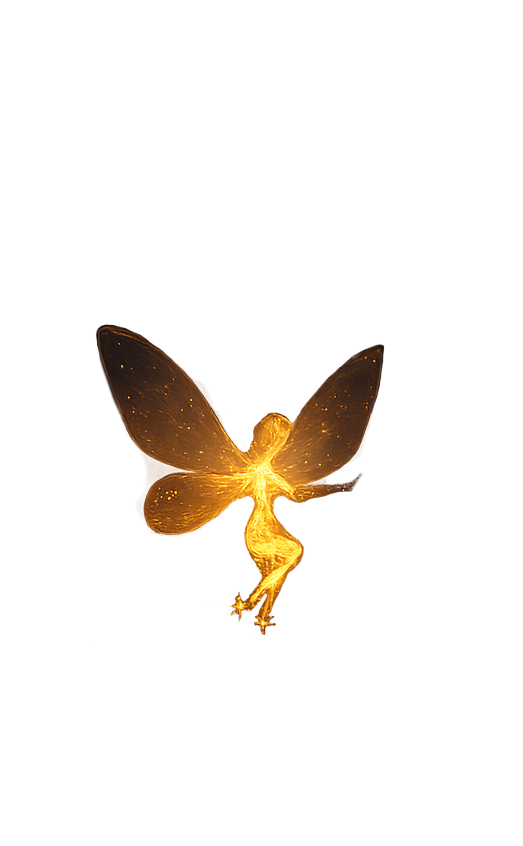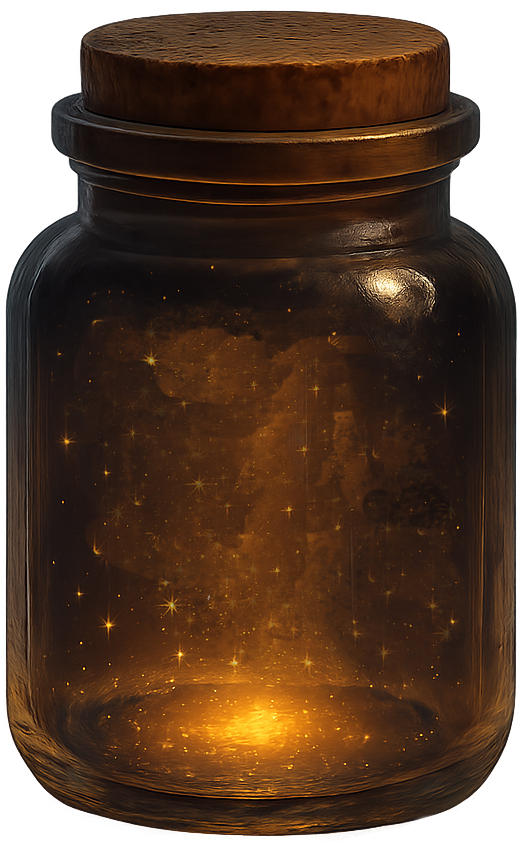
Drawn to puddles, gutters, and fleeting joy before the sun returns.
In the quiet drip of cavern springs or the misted breath of riverbanks at dawn, one may glimpse a flicker of motion—a glint of suspended moisture darting through air or skimming across stone. These are the Drenchlings, the smallest known manifestation of water-aligned elementals. Rarely taller than a candle’s flame and no heavier than a dewdrop, they exist on the boundary between form and flow, taking on transient, shifting shapes held together by surface tension and will alone.
 Drenchlings are not conjured in the traditional sense. Rather, they accumulate, forming spontaneously in areas of persistent humidity or magical saturation, especially where natural water intersects with minor leylines or neglected wards. Though often mistaken for enchanted droplets or peculiar insects, they are wholly elemental—alive in a manner that confounds both biological and arcane definitions.
Drenchlings are not conjured in the traditional sense. Rather, they accumulate, forming spontaneously in areas of persistent humidity or magical saturation, especially where natural water intersects with minor leylines or neglected wards. Though often mistaken for enchanted droplets or peculiar insects, they are wholly elemental—alive in a manner that confounds both biological and arcane definitions.
 Their behavior is curious, even playful. They tend to spiral around sources of motion—wind currents, heated objects, even living beings—drawn to warmth not out of malice but instinctive fascination. Unlike their fiery cousins, such as the volatile Cinder Wicks, Drenchlings rarely cause harm. At worst, they may dampen parchment, extinguish candles, or soak the hems of robes while clinging to a wizard’s boots. Some scholars suspect this is their idea of mischief, though others argue it may be rudimentary attempts at communication.
Their behavior is curious, even playful. They tend to spiral around sources of motion—wind currents, heated objects, even living beings—drawn to warmth not out of malice but instinctive fascination. Unlike their fiery cousins, such as the volatile Cinder Wicks, Drenchlings rarely cause harm. At worst, they may dampen parchment, extinguish candles, or soak the hems of robes while clinging to a wizard’s boots. Some scholars suspect this is their idea of mischief, though others argue it may be rudimentary attempts at communication.
 Magicians and alchemists have long debated their utility. Unlike larger water elementals, Drenchlings cannot carry messages through water or manipulate significant volumes of liquid. However, their presence is often seen as a positive omen for hydromancy or herbal preparation—where clean, ambient moisture is valued over force. Some apothecaries encourage them to nest in glass vials or silver bowls, believing their presence subtly enhances the efficacy of infusions and tinctures.
Magicians and alchemists have long debated their utility. Unlike larger water elementals, Drenchlings cannot carry messages through water or manipulate significant volumes of liquid. However, their presence is often seen as a positive omen for hydromancy or herbal preparation—where clean, ambient moisture is valued over force. Some apothecaries encourage them to nest in glass vials or silver bowls, believing their presence subtly enhances the efficacy of infusions and tinctures.
When threatened or disturbed, a Drenchling will scatter into a fine mist or collapse into a harmless puddle, reforming hours or days later if the conditions remain favorable. They leave behind no residue, no lingering aura—just a sense of freshness in the air, like the moment before rain.
 Though they possess no language, Drenchlings have been observed engaging in mirrored motions—splashing when others splash, circling where fingers trace the surface of water—as if mimicking life in search of understanding. In village lore, they are often said to appear during deep rains, drawn to places where laughter, grief, or memory linger. Children leave out saucers and overturned spoons in hopes of glimpsing one dancing in the runoff. Some believe Drenchlings are not just water given will, but memory given form—reflections of moods the land itself cannot voice.
Though they possess no language, Drenchlings have been observed engaging in mirrored motions—splashing when others splash, circling where fingers trace the surface of water—as if mimicking life in search of understanding. In village lore, they are often said to appear during deep rains, drawn to places where laughter, grief, or memory linger. Children leave out saucers and overturned spoons in hopes of glimpsing one dancing in the runoff. Some believe Drenchlings are not just water given will, but memory given form—reflections of moods the land itself cannot voice.
They have no masters, no known purpose, and no permanence. And yet, when storms swell and gutters overflow, they come—not as servants, but as visitors—drawn to puddles, rooftops, and the fleeting joy of movement before the sun returns.
The following magical heirlooms are fictional and lore-based in nature. Each one is an affiliate link to a real-world item on Amazon that we've hand-selected to complement this artifact's lore.


If you click a link and buy an item, we may earn a commission.It costs you nothing extra, but can help keep this little corner of the internet glowing.
What does this mean?
Increases swim speed and allows long-distance hydro acoustic communication through-out an entire body of water.

Know the sky's secrets before the wind dare speak them.

For those who prefer their own weather.

Locals claim these idols help bring rain and replenish their gardens.



